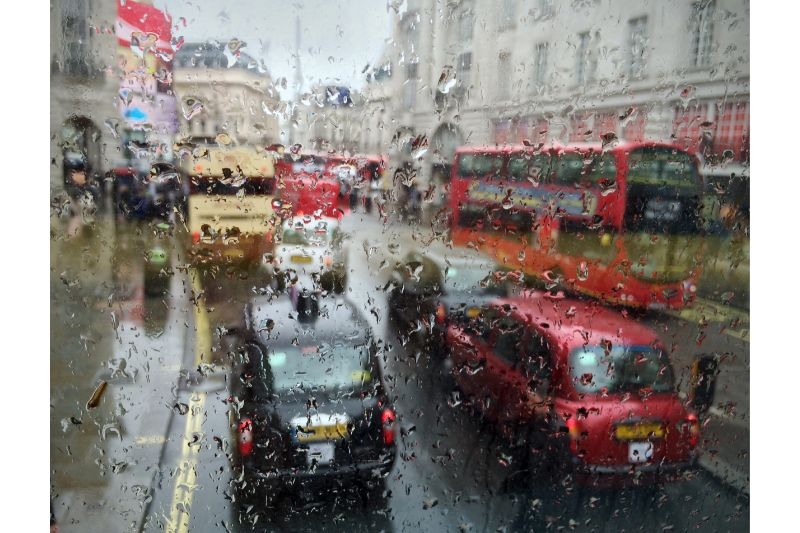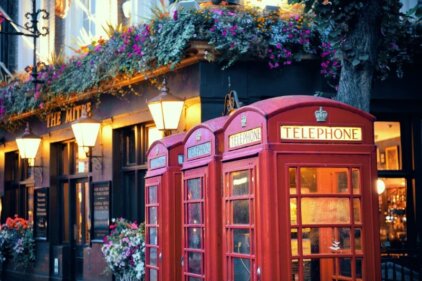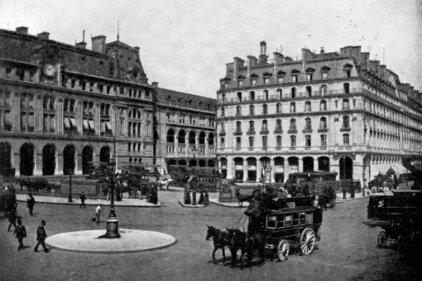Understanding Microclimates and How They Affect Weather Patterns
Microclimates are localized atmospheric conditions that differ from the broader regional climate. In a city as dynamic and densely populated as London, these microclimates can be remarkably diverse, shaped by factors such as topography, proximity to water bodies, urban density, and even the presence of green spaces.
By understanding the nuances of these microclimates, we can better prepare for the unpredictable nature of London’s weather and embrace the richness of the city’s meteorological tapestry.
The Unique Weather Patterns in Central London
At the heart of the city, Central London is a bustling hub of activity, with towering skyscrapers, historic landmarks, and a constant flow of people. This urban landscape creates a unique microclimate that is often warmer and drier than the surrounding areas.
The high concentration of buildings and the heat generated by human activity can create an “urban heat island” effect, leading to higher temperatures and reduced precipitation. Additionally, the wind patterns in Central London can be influenced by the tall structures, resulting in gusty conditions and occasional microbursts.
As we navigate the streets of Central London, we must be mindful of the potential for sudden temperature fluctuations, unexpected showers, and the need to dress in layers to adapt to the ever-changing weather conditions.
Exploring the Microclimate of East London
Venture eastward, and you’ll discover the distinct microclimate of East London. This vibrant, diverse region is known for its creative spirit and industrial heritage, but it also boasts a unique weather pattern.
The proximity to the River Thames and the presence of large green spaces, such as Victoria Park, contribute to a slightly cooler and more humid environment compared to Central London. The river’s influence can also bring about more frequent fog and mist, adding an atmospheric quality to the area.
Residents of East London often enjoy a slightly longer growing season for their urban gardens, thanks to the moderating effect of the river and the abundance of green spaces. However, this microclimate can also make the area more prone to heavy rainfall and occasional flooding during periods of intense precipitation.
Unveiling the Weather Patterns in North London
As we move northward, the microclimate of London takes on a different character. The higher elevations and the presence of large parks and open spaces, such as Hampstead Heath, create a distinct weather pattern.
In North London, you’ll often find cooler temperatures, especially during the summer months, as the elevation and the abundance of green areas help to mitigate the urban heat island effect. The wind patterns in this region can also be more pronounced, with a higher likelihood of gusty conditions and occasional blustery days.
Residents of North London may experience more consistent rainfall compared to other parts of the city, as the elevated terrain can influence the movement of weather systems. This microclimate can also lead to a slightly delayed onset of spring and a more prolonged winter season.
The Distinct Microclimate of South London
Crossing the River Thames, we arrive in the distinct microclimate of South London. This region, known for its charming neighbourhoods and leafy suburbs, boasts a weather pattern that is often more temperate and sheltered than other parts of the city.
The presence of the river and the proximity to the English Channel can contribute to a slightly milder climate, with fewer extreme temperature fluctuations. Additionally, the abundance of green spaces and the lower density of buildings in South London can create a more serene and tranquil atmosphere.
However, this microclimate is not without its challenges. The proximity to the water can also make South London more susceptible to coastal weather patterns, such as increased humidity, mist, and occasional sea breezes. Residents in this area may need to be prepared for the unpredictable nature of these maritime influences.
Discovering the Weather Patterns in West London
As we venture westward, we encounter the unique microclimate of West London. This affluent region, home to iconic landmarks and prestigious institutions, has a weather pattern that is often more consistent and predictable.
The proximity to the River Thames and the abundance of parks and gardens, such as Kensington Gardens and Hyde Park, contribute to a slightly cooler and more humid environment. The presence of these green spaces can also help to moderate the effects of the urban heat island, leading to a more comfortable and temperate climate.
One of the notable features of the West London microclimate is the tendency for more stable weather patterns. The area is often less affected by sudden shifts in weather conditions, making it a haven for those who prefer a more consistent outdoor experience.
Factors that Contribute to London’s Microclimates
London’s diverse microclimates are shaped by a multitude of factors, including:
- Topography: The city’s varying elevations, from the low-lying areas along the River Thames to the higher ground in the north, can significantly impact local weather patterns.
- Proximity to water bodies: The influence of the River Thames, the English Channel, and other water sources can create unique microclimates, affecting factors such as temperature, humidity, and precipitation.
- Urban density: The concentration of buildings, roads, and human activity in certain areas can lead to the formation of urban heat islands, altering temperature and wind patterns.
- Green spaces: The presence of parks, gardens, and other vegetation can help to moderate the effects of the urban environment, creating cooler and more humid microclimates.
- Transportation networks: The flow of traffic and the heat generated by vehicles can contribute to the creation of localized weather patterns, particularly in areas with high congestion.
Understanding these factors is crucial in navigating the ever-changing weather conditions across London’s diverse neighbourhoods.
How to Prepare for London’s Unpredictable Weather
Embracing the diversity of London’s microclimates requires a flexible and adaptable approach to weather preparation. Here are some tips to help you navigate the city’s unpredictable weather:
- Layer your clothing: Dressing in layers allows you to easily adjust to temperature fluctuations and sudden changes in weather conditions.
- Carry a portable umbrella: Be prepared for unexpected showers by always having a compact umbrella on hand.
- Monitor weather forecasts: Stay informed about the latest weather predictions for your specific neighbourhood to plan your day accordingly.
- Embrace the diversity: Appreciate the unique character of each microclimate and be open to the surprises that London’s weather has in store.
Conclusion: Embracing the Diversity of London’s Microclimates
London’s microclimates are a testament to the city’s dynamic and ever-evolving urban landscape. By understanding the nuances of these localized weather patterns, we can better appreciate the richness and diversity that define the character of each neighbourhood.





